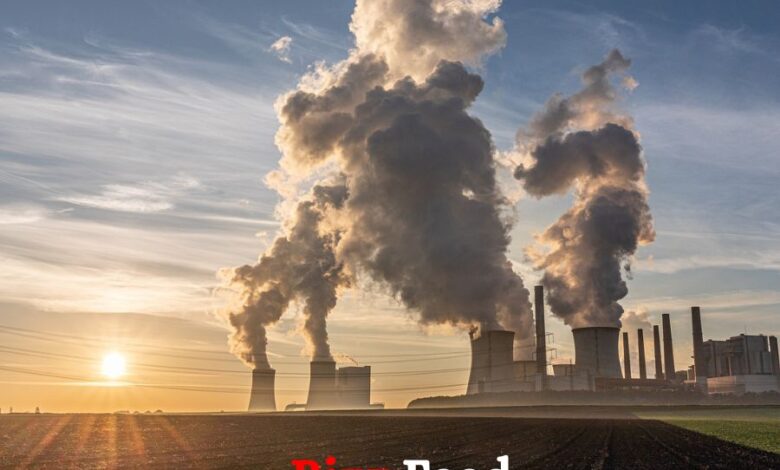Mysteries of Cảbon: From Carbon Footprints to Sustainable Living

Cảbon, a six-letter word with a significant impact, may seem unassuming, but it holds the key to understanding our planet’s health and the choices we make every day. In this article, we embark on a journey to explore the multifaceted world of cảbon, diving into topics ranging from carbon footprints to sustainable living, all while highlighting its relevance in our lives.
The Importance of Cảbon in Earth’s Ecosystems
Cảbon Cycle: Understanding the Intricate Web of Carbon Exchanges in the Environment
In the intricate dance of life on Earth, carbon plays the role of a silent but indispensable partner. The carbon cycle, a complex web of processes, ensures that carbon is constantly moving through the atmosphere, oceans, and land. This cycle, which involves the exchange of carbon between living organisms, the atmosphere, and the Earth’s crust, is vital for maintaining the balance of carbon in our environment.
Carbon dioxide (CO2), a greenhouse gas, is a critical player in this cycle. It acts as a natural thermostat for the planet, regulating its temperature. When CO2 levels rise, the Earth warms, and when they fall, it cools. Understanding this delicate balance is crucial for comprehending climate change and the impact of human activities on the environment.
Cảbon Footprints and Sustainable Living
Defining Carbon Footprints: What They Are and Why They Matter
A Cảbon footprint is the mark we leave on the environment through our daily activities. It represents the amount of greenhouse gases, primarily CO2, emitted into the atmosphere as a result of our actions. Everything we do, from driving a car to heating our homes, has a carbon footprint.
These footprints matter because they contribute to the ever-increasing levels of CO2 in the atmosphere, which in turn drives climate change. Acknowledging the existence of our Cảbon footprints is the first step toward minimizing them and adopting a more sustainable lifestyle.
Measuring Your Cảbon Footprint:
Tools and Methodologies for Assessment
Measuring your Cảbon footprint might seem like a daunting task, but it’s an essential one. Numerous tools and methodologies are available to help individuals and organizations calculate their carbon emissions accurately. From online calculators that estimate your footprint based on your daily activities to more comprehensive assessments that consider every aspect of your lifestyle, these tools provide valuable insights into your environmental impact.
By understanding the sources of your Cảbon emissions, you can identify areas where you can make meaningful reductions and contribute to a more sustainable future.
Reducing Your Cảbon Footprint:
Practical Tips for a More Sustainable Lifestyle
Reducing your Cảbon footprint doesn’t require drastic changes to your life. Small, everyday choices can add up to significant emissions reductions over time. Simple steps like conserving energy at home, reducing waste, and adopting sustainable transportation options can make a substantial difference.
Transitioning to energy-efficient appliances, using public transportation or carpooling, and consuming locally sourced, sustainable foods are just a few examples of ways to lower your carbon footprint. By making these choices, you not only reduce your environmental impact but also inspire others to join the movement toward sustainable living.
Businesses Going Green
How Companies Are Adopting Sustainable Practices to Shrink Their Carbon Footprints
Businesses, both large and small, are recognizing the importance of reducing their Cảbon footprints. Sustainability has become a core principle for many companies, driven by consumer demand and the realization that responsible practices are not only good for the planet but also their bottom lines.
Companies are adopting various strategies to shrink their carbon footprints, such as investing in renewable energy, optimizing supply chains to reduce emissions, and implementing energy-efficient technologies. These initiatives not only benefit the environment but also demonstrate the power of corporate responsibility in addressing the challenges of climate change.
Cảbon Capture and Storage (CCS) Technology
Deciphering CCS: The Art of Capturing and Sequestering Carbon Emissions
In the global battle against climate change, Cảbon Capture and Storage (CCS) technology emerges as a crucial ally. This innovative approach revolves around the meticulous capture of CO2 emissions stemming from various sources, including industrial operations and power plants. Rather than allowing these emissions to escape into the atmosphere, CCS technology takes the proactive step of confining them underground within geological formations.
This strategic maneuver serves a dual purpose: firstly, it curbs the contribution of CO2 to the greenhouse effect, thereby averting further environmental harm. Secondly, it empowers us to significantly reduce carbon emissions, paving the way for a more sustainable energy landscape. CCS stands as a formidable tool in our quest for a greener, carbon-conscious future.
The Potential of CCS in Combating Climate Change
The potential of CCS technology in combating climate change is immense. By capturing and storing Cảbon emissions, CCS reduces the amount of CO2 released into the atmosphere, helping to slow the rate of global warming. This technology can play a crucial role in achieving carbon neutrality and addressing the challenges posed by climate change.
As the world continues to transition to cleaner energy sources, CCS is poised to become an even more vital tool in our efforts to reduce greenhouse gas emissions and safeguard our planet for future generations.
Conclusion:
Cảbon, in all its forms and implications, is an integral part of our world. It shapes our climate, our environment, and even our daily choices. By delving into the diverse aspects of cảbon, we gain insights into the path toward a more sustainable, eco-conscious future. As we navigate the challenges posed by climate change, our understanding and actions regarding cảbon will play a pivotal role in preserving our planet for generations to come.
You May Also Read: How Much Do Gallbladders Weigh




